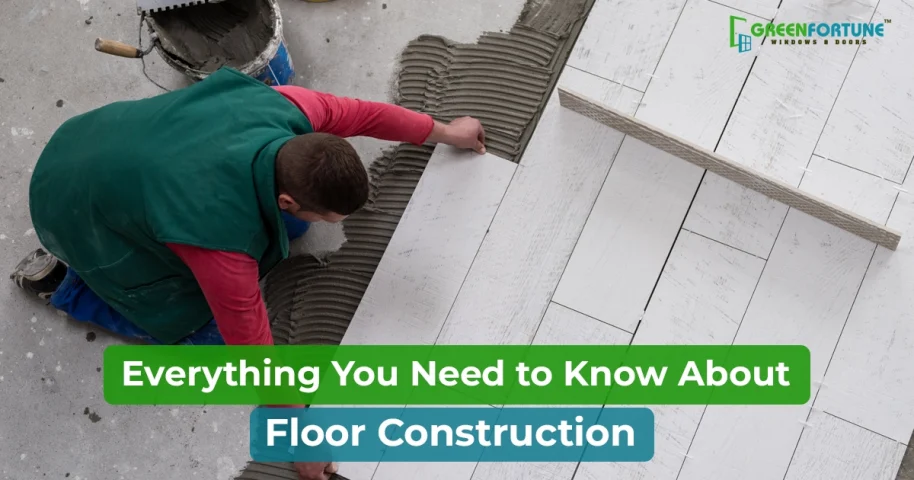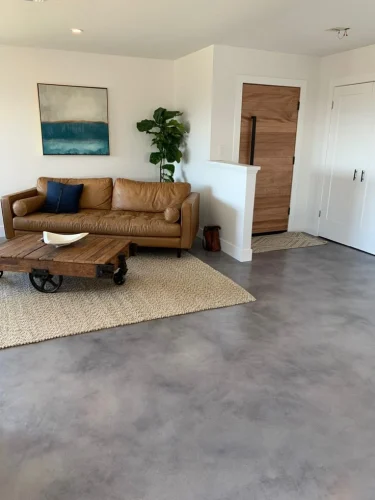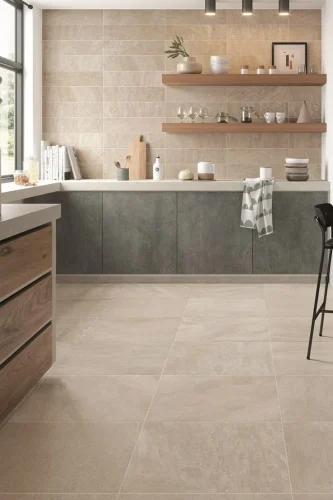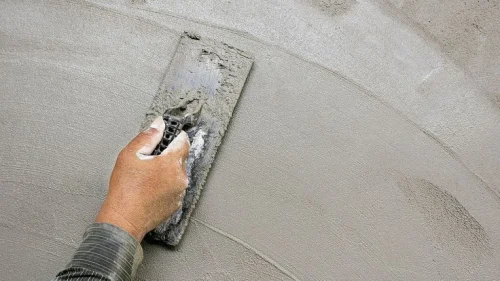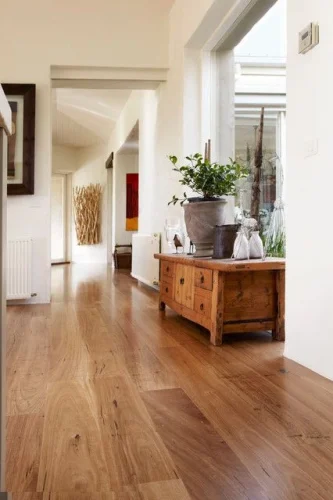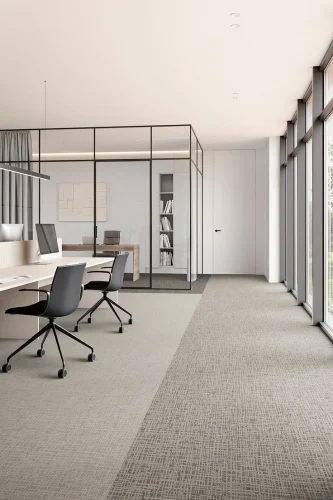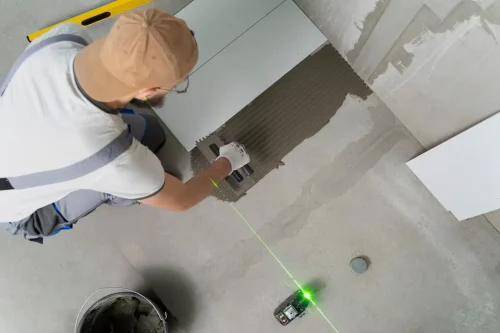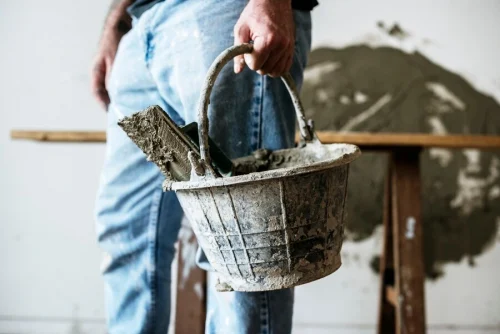
Office Glass Door Designs: 20+ Stunning Ideas For Modern Workspace
May 5, 2025
All About Lintels in Construction: Functions, Variants, and Installation Guide
May 5, 2025When we walk into a house or any building, we tend to ignore the one thing that could just be the foundation of our day-to-day life experience. The floors! Whether it’s the cool touch of concrete flooring under your feet, the solidness of tiles, or the quiet comfort of carpet floors, it’s the flooring that sets the tone in the end.
So, when it comes to construction, flooring isn’t all about appearance; it’s also about strength and stability. Thus, from your home to your office, proper flooring construction is what makes sure that the ground we walk on stays strong and steady for years.
Common Flooring Methods in Construction
The construction of flooring is unique to each building, so it’s a given that its methods also stay unique. Each flooring method in construction suits different spaces and finishes. Here are some of the most common flooring methods to know:
1. Concrete Flooring
Source: Pinterest
Concrete or cement flooring is one of the oldest and reliable floorings. This type of floor is perfect for homes, warehouses, and public spaces. Concrete flooring involves layering a mix of cement, sand, and water over a base. However, what makes this flooring most reliable is its strength and low cost. If you’re looking at flooring options for basements, garages, or warehouses, then concrete flooring is a good choice.
2. Tile Flooring
Source: Pinterest
When you think tile floors, think about ceramic, vitrified, or porcelain tiles. These tiles are laid over a levelled surface using a tile adhesive. The best part about tile flooring in construction is that they are easy to clean and can be customised as it comes in various textures. Tile flooring can be ideal for kitchens, bathrooms, and living areas.
3. Floor Screeding
Source: Pinterest
Screeding is a thread-like layer of cement and sand that creates the sub-floor. This creates a level surface for tiling or any other flooring method you’d like to employ. Floor screeds can be bonded, unbonded, floating, or heated, depending on the needs and functionality of the floor. This method is best for preparing a base for tiles or timber flooring.
4. Timber Flooring
Source: Pinterest
Timber or wood flooring is also a common flooring method in construction, as this flooring gives a warm feel to your space. Timber floors are usually installed over screeds or platforms. However, in modern flooring construction, engineered wood is more common as it has better water-resistant properties. This can be good for bedrooms, living areas, and commercial spaces.
5. Carpet Flooring
Source: Pinterest
Another common flooring method in construction is carpet flooring. This carpet for floors is made from fibres such as wool, nylon, polyester, or polypropylene. There are various shades, styles, and textures for this flooring type. However, these are not recommended for areas prone to spills or dampness.
Also Read: Why Red Oxide Flooring is Making a Comeback in Modern Homes
Floor Concreting Tips to Know
1. Prepare the Ground
Before you begin construction of flooring, it’s important to prep the sub-base. This involves levelling, compacting, and moisturising the area. If your preparation is poor, then it can cause uneven surface and cracks on the surface as well.
2. Install Formwork
Next, you can set up moulds or formwork of either steel or wood to outline your floor area. This will help ensure straight edges and control the depth of the floor, too. Moreover, this step helps prevent the cement from spilling over.
3. Pour the Concrete
Now, you can mix the concrete using a proper ratio of cement, sand, water, and aggregates. This mix can be poured into the formwork in layers to prevent air bubbles. Once that’s done, a screed can be used to level the surface, removing excess concrete.
4. Lastly, Begin Curing
Lastly, it’s time for concrete curing. This process is important as it can help the concrete gain strength and avoid cracks on the surface. However, make sure that the surface is hydrated regularly to boost its strength and durability.
Best Practices for Flooring in Construction
Use Reinforcements
When you’re constructing floors for areas with heavy foot traffic or poor ground conditions, it’s best to lay a wire mesh or steel bars within the concrete flooring to increase floor strength.
Don’t Rush
Allow time before you begin tiling. Let the concrete cure and dry for at least 28 days before you place tiles or other floor options over the concrete surface.
Plan Proper Drainage
For flooring in bathrooms, rooftops, or kitchens, slope the floor towards drains to prevent water blockage.
Check for Screed Thickness
The minimum thickness of bonded screed should be 25mm, and for unbonded screed, 50mm. Don’t go for anything thinner than this, otherwise it might cause cracks on the flooring.
Don’t Mix New Concrete With Old
Another don’t when it comes to flooring construction, especially when flooring concrete, is not to mix old cement with new ones. When two batches of concrete mix, it can weaken your flooring.
Related Read: River Sand vs M Sand: Which is Better for Your Construction Needs?
Safety Tips to Keep in Mind When Flooring
Construction of flooring might seem like a routine process, but it still requires you to be safe. Here are some smart safety tips to know when flooring:
- Always wear protective gear like gloves, goggles, and masks. Cement is alkaline and can burn the skin or cause respiratory issues.
- Clearly mark off your working areas to prevent injuries and accidents.
- When you use mixers or cutters, make sure there is proper insulation and grounding to prevent electrical accidents. Also, when working with live equipment, make sure to avoid water contact.
Final Words:
A good flooring isn’t about what kind of surface you’re walking on, it’s about what lies beneath your feet. Choosing the right flooring construction methods, preparing your materials, and following best practices for flooring can add to your floor's strength and longevity. The tips mentioned in this guide can help you construct floors that don’t just look good, but are also functional.
Why Choose Green Fortune uPVC Doors & Windows for Your Home?
Constructing your home is a moment of pride and joy, and we are here to celebrate with you. Green Fortune uPVC doors and windows can add to your house’s functionality and aesthetics. Our products guarantee durability, sustainability, energy efficiency, and more. With Green Fortune, turn your house into a haven of comfort and safety. To know more about our home improvement solutions and products, click here.
Frequently Asked Questions (FAQs):
Q: What is a floor screed?
Floor screed refers to a thread-like layer made from concrete, sand, and water, which is applied to the floor to create a smooth and level surface.
Q: What makes concrete flooring so popular in warehouses?
Concrete flooring is durable and can support heavy loads. Moreover, it is easy to maintain, making them a popular choice for warehouses and factories.
Q: Which flooring is more waterproof?
Porcelain tiles are waterproof and more durable, making them an ideal choice for kitchens and bathrooms. More so, porcelain tiles come in various textures and styles, making them a good choice for both functionality and aesthetics.




